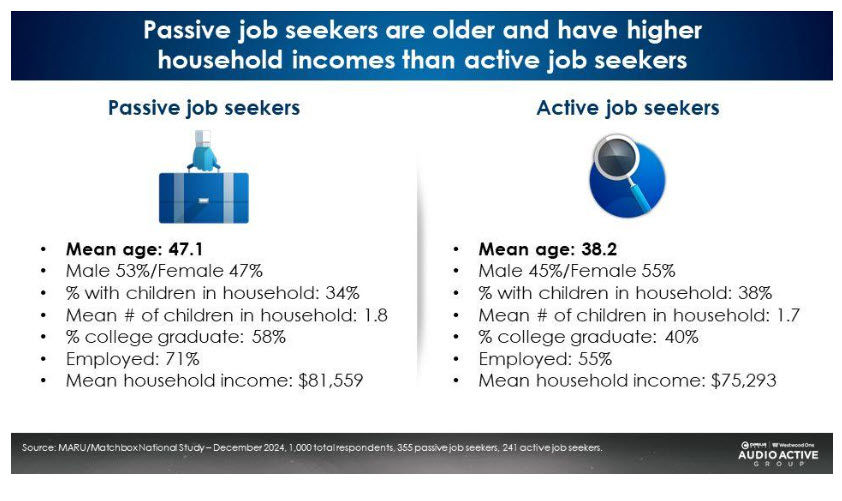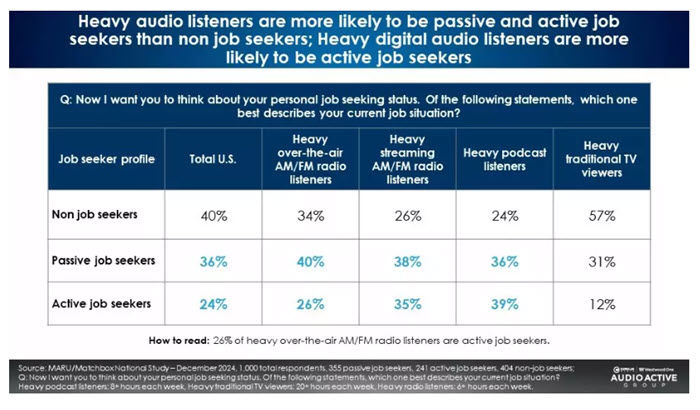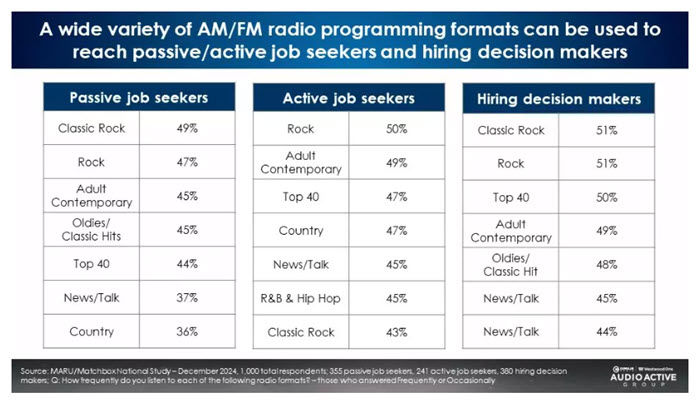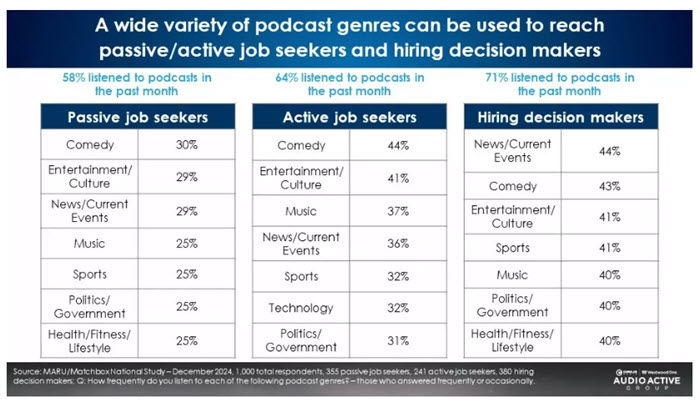Audio: The Ideal Platform For Reaching Passive And Active Job Seekers.
- Inside Audio Marketing

- Jul 8
- 2 min read

Findings from a study among 1,000 U.S. adults show that nine in 10 active and passive job seekers (89%) are reached by ad-supported audio, with nearly eight in 10 (78%) by over-the-air AM/FM radio, and six in 10 (64% of actives, and 58% of passives) by podcasts.
The December 2024 study conducted by MARU/Matchbox and commissioned by the Cumulus Media/Westwood One Audio Active Group — the fourth in a series of similar studies since 2018 — shows that passives, or those not actively looking for a new job, account for 36% of job seekers, vs. 24% who are actives.
According to an analysis in Westwood One’s blog, while active job seekers — those who say they are “actively applying for new jobs/interviewing or planning to look” — claim a smaller share, their number has reached a seven-year high, according to MARU/Matchbox.

For recruiters, or job site advertisers such as Indeed or ZipRecruiter, it’s worth noting that passive job seekers skew older, male and more likely to be employed with a higher household income, vs. the younger and more female active job seeker.
The good news is that both can be reached with ad-supported audio, with 89% of both actives and passives saying they’ve listened in the past month, ahead of TV. While 78% of both groups listen to over-the-air AM/FM radio, online streaming of AM/FM has grown significantly among both since 2021 — up from 50% to 62% among actives, and 39% to 47% for passives.

Additionally, says Cumulus Media/Westwood One Audio Active Group Chief Insights Officer Pierre Bouvard, “Heavy audio listeners are far more likely to be passive and active job seekers than non-job seekers, [and] heavy digital audio listeners (AM/FM radio streaming and podcasts) are much more likely to be active job seekers. In contrast, heavy TV viewers are far less likely to be job seekers.”

With so many job seekers tuned to AM/FM, there’s a wide variety of formats to reach them with, as is the case for hiring decision makers. “The younger skew of active job seekers is evidenced by larger audiences for more contemporary music formats like top 40 and R&B/hip-hop,” Bouvard says. “The older skew of passive job seekers reveals stronger audience reach for gold-based programming formats such as classic rock and oldies/classic hits.” Likewise, each of these groups also listen to a wide range of podcasts.

One more reason for recruiters to consider ad-supported audio is that only 68% of passive job seekers use job sites frequently or occasionally, vs. 90% of actives. “Companies who solely rely on online job sites to recruit new hires are missing out on passive job seekers who outnumber active job seekers,” Bouvard says. “Adding over-the-air AM/FM radio, AM/FM radio streaming, and podcasts to the recruitment media plan can help secure these hard-to-reach candidates.”
MARU/Matchbox’s study also finds that both active and passive job seekers rely less on word of mouth or friends/family than on job posting websites or personal/professional connections. For both, the use of Indeed, LinkedIn and ZipRecruiter has increased significantly since 2022. Bouvard also notes that “among both active and passive job seekers, Indeed, consistently a leading user of network radio, enjoys strong advertising recall, followed by LinkedIn, and ZipRecruiter.”




Comments